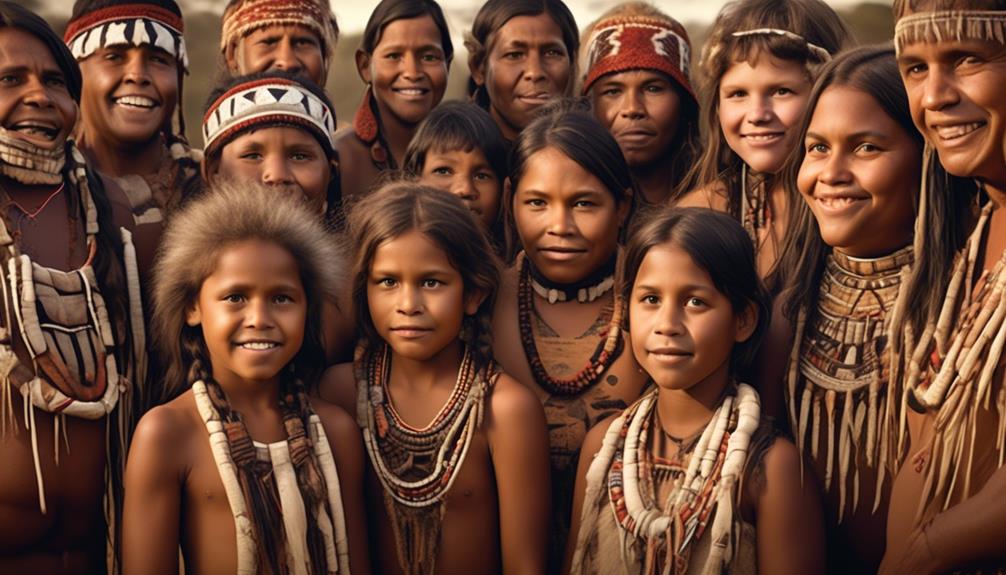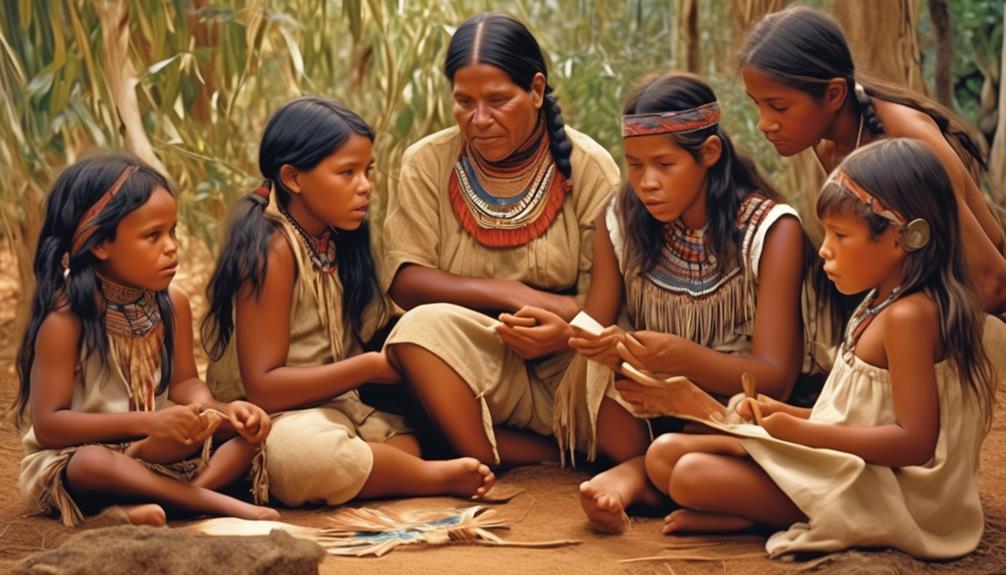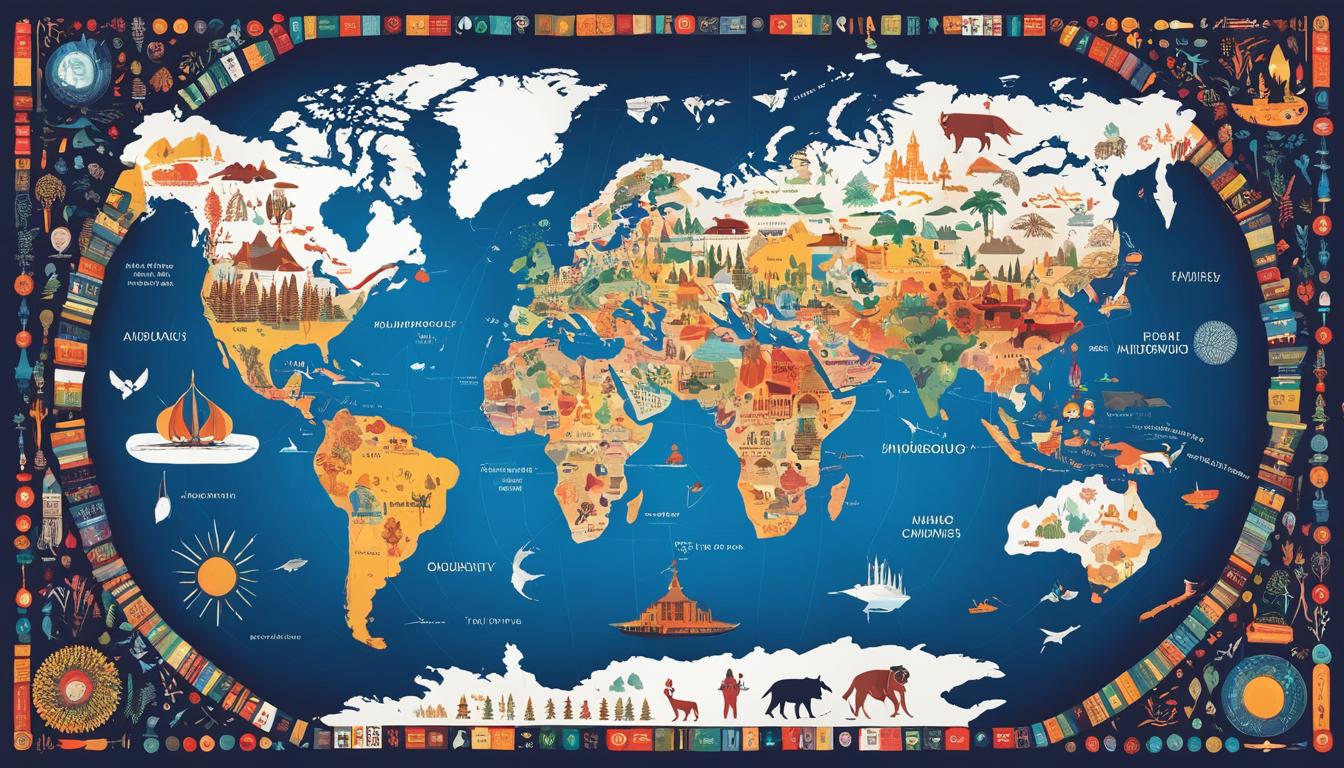Reviving the Ngarrindjeri language helps preserve the Coorong’s rich cultural stories, traditions, and spiritual connection to land and water. Your involvement supports keeping this essential language alive, passing down knowledge through storytelling, ceremonies, and modern technology. By fostering community participation and respecting customs, you help safeguard the deep spiritual and ecological ties that define Ngarrindjeri identity. Stay with us to discover more about how this inspiring revival journey continues.
Key Takeaways
- Reviving the Ngarrindjeri language involves community-led storytelling, cultural practices, and integration into education and ceremonies.
- Elders play a crucial role by sharing traditional stories to pass down language and cultural knowledge.
- Modern technology, such as recordings and apps, supports language learning and preservation efforts.
- Incorporating Ngarrindjeri stories in schools fosters cultural pride and linguistic continuity among youth.
- Protecting the language helps maintain spiritual ties to the Coorong’s land, water, and ancestral heritage.

Have you ever wondered about the rich linguistic heritage of the Ngarrindjeri people? Their language is more than just words; it’s an essential link to their history, culture, and identity. For generations, Ngarrindjeri elders have used traditional storytelling to pass down knowledge, customs, and spiritual beliefs. These stories aren’t just tales; they’re the foundation of their cultural identity, woven into the very fabric of their language. When you listen to a Ngarrindjeri storyteller, you’re hearing more than language—you’re experiencing a living connection to the land, the water, and the ancestors who shaped their world. But with the passing of elders and changing times, the language faced the risk of fading away. That’s why language preservation efforts are so fundamental. They serve as a bridge between the past and the present, ensuring that future generations can continue to speak and understand Ngarrindjeri.
Ngarrindjeri language connects us to land, water, elders, and cultural identity through storytelling and tradition.
You might wonder how traditional storytelling plays a role in this effort. It’s simple: storytelling isn’t just entertainment; it’s a means of keeping the language alive. When community members share stories in Ngarrindjeri, they reinforce vocabulary, pronunciation, and grammar in a natural, meaningful context. Schools and cultural initiatives now incorporate storytelling sessions, where elders and young people gather to share tales, therefore fostering a sense of pride and belonging. These stories often highlight important ecological knowledge, spiritual traditions, and lessons about respect for nature—values deeply embedded in their language. By doing so, they help keep the language relevant and vibrant, rather than just a relic of the past. Engaging with cultural practices like storytelling also encourages community members to maintain their traditional connection to the land and water, which are central to Ngarrindjeri identity.
Language preservation is a collaborative effort, requiring community involvement, education, and respect for Ngarrindjeri customs. It’s about more than memorizing words; it’s about embracing the stories, the ceremonies, and the world view that the language embodies. Modern technology plays a role too, with recordings, apps, and online resources designed to reach younger generations and those outside the community. These tools make it easier for people to learn and practice Ngarrindjeri, ensuring that the language continues to thrive long after today.
If you’re passionate about cultural heritage, supporting efforts to revive and maintain the Ngarrindjeri language becomes a meaningful act. It’s a way to honor their traditional storytelling methods, safeguard their linguistic legacy, and keep their vibrant culture alive for generations to come. By doing so, you help preserve a language that is not only spoken but also felt—deep within the heart of the Ngarrindjeri people and their land.
Frequently Asked Questions
How Many People Currently Speak Ngarrindjeri Fluently?
You might be surprised to learn that only a small number of people currently speak Ngarrindjeri fluently, with estimates around a few dozen. To achieve effective language preservation, community engagement plays a crucial role, encouraging more speakers and passing down the language to younger generations. Your involvement in these efforts can substantially support the revival process, ensuring that Ngarrindjeri’s rich cultural heritage continues to thrive for future generations.
What Programs Are Available for Learning Ngarrindjeri Today?
Did you know there are over 20 community workshops and language immersion programs available for learning Ngarrindjeri today? These programs actively involve community members, helping to revitalize the language. You can participate in language immersion sessions or join local workshops to learn pronunciation, vocabulary, and cultural stories. By engaging in these programs, you’re helping preserve Ngarrindjeri for future generations and strengthening cultural identity.
Are There Any Digital Resources for Ngarrindjeri Language Learners?
Yes, there are digital resources for Ngarrindjeri language learners. You can explore interactive apps that make learning engaging and fun, helping you practice pronunciation and vocabulary. Additionally, online dictionaries provide quick access to Ngarrindjeri words and phrases, supporting your learning journey. These tools are excellent for self-study and help keep the language alive, making it easier for you to connect with Ngarrindjeri culture and heritage.
How Does Ngarrindjeri Compare Linguistically to Other Aboriginal Languages?
You might imagine Ngarrindjeri as a vibrant thread in Australia’s linguistic tapestry. Its unique features include complex verb structures and distinct phonetics, setting it apart from other Aboriginal languages. A comparative analysis reveals Ngarrindjeri’s rich oral traditions and unique grammatical patterns, making it both similar and different from neighboring languages. It’s truly an essential part of Indigenous identity, showcasing linguistic diversity across the continent.
What Are the Main Challenges in Revitalizing Ngarrindjeri?
You face significant challenges in revitalizing Ngarrindjeri, mainly in cultural preservation and funding. Limited resources make it hard to develop language programs and train new speakers. Without consistent support, maintaining the language’s vibrancy becomes difficult. To succeed, you need strong community engagement, dedicated funding, and partnerships to guarantee Ngarrindjeri’s rich cultural heritage continues for future generations.
Conclusion
As you explore the Ngarrindjeri language, you realize how reviving the Coorong’s tongue isn’t just about words—it’s about reconnecting with a land filled with stories. Funny how history and effort intertwine, reviving a language thought lost, just like the waves that continually shape the coast. Maybe, in the end, it’s no coincidence that restoring this language breathes new life into both culture and nature, reminding us all of our deep, unexpected connections.
Mary is a passionate writer who brings creativity and a fresh perspective to our team. Her words have the power to captivate and inspire, making her an essential contributor to our content. Mary’s commitment to storytelling and dedication to promoting Indigenous culture ensures that her work touches the hearts of our readers. We’re fortunate to have her as part of our team.









